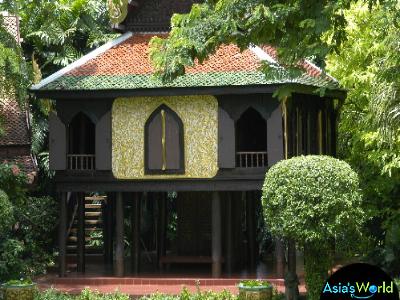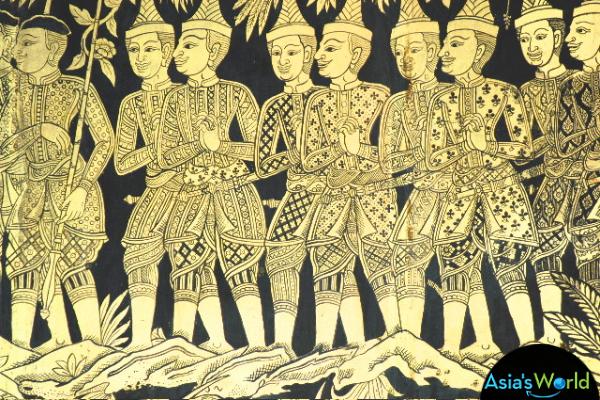The Ho Khien Lacquer Pavilion

Ayuthayan Black Lacquer House
The Suan Pakkad Lacquer Pavilion
- The Lacquer Pavilion is visual highlight of the Museum and an extraordinary example of Thai art, positioned at the edge of the garden.
-
The structure is more than 200 years old and it formerly stood in the
precincts of a temple. The late Prince Chumbhot purchased the building
and moved it to these grounds, then had it restored. The pavilion
consists of a room within a room. A narrow corridor winds all the way
around an inner room.
-
The walls of the corridor are decorated in richly
carved gilded wood. The interior of the inner room is decorated
entirely in gold and black lacquer. The effect is stunning. The technique of lacquering in black and gold was known in China for thousands of years but introduced to Thailand in the Ayutthaya period. The work portrays a uniform black background with details of the Life of Buddha on the the upper panels and scenes from the Ramakien on the lower portions.
- As this building is a reconstruction of an earlier Ho Trai at Wat Bang Kling in Ayutthaya Province not all the aspects of traditional depictions are present now.
- The paintings depict various events from the life of Buddha, along with others from the Hindu epic, Ramayara. There are also the numerous scenes from daily Thai life, as well as some showing early foreign visitors to Ayutthaya. These foreigners are depicted in the uniforms of the period of Louis XIV. In 1687 French troops were despatched to Siam to protect King Narai from English and Dutch forces.

Ho Khien Lacquer Pavilion Artwork







